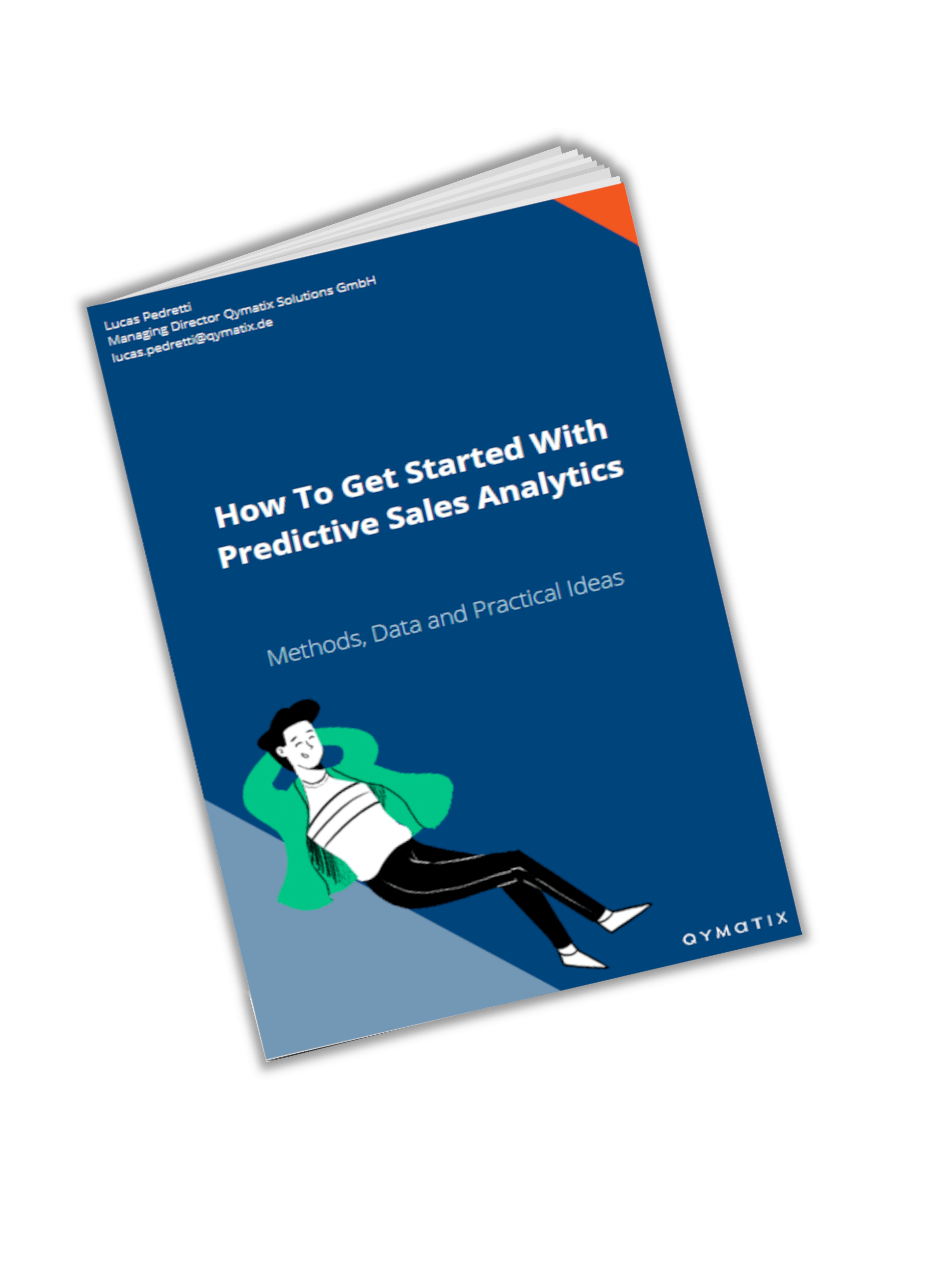B2B-Trends 2020/21: The Top 6 in Sales

Please enter your Email address
Whether digital platforms, AI or chatbots. In the future, B2B sales must deal with these six critical trends.
Experts guess every year what the next hot B2B trends will be. Artificial intelligence is on the main scenario now, for B2B sales and its future development potential.
We have looked at several studies and sources and have summarized the top six you should know now.
1. Customer experience as in B2C
According to the “Trendpaper 2020” of the Bundesverband Industrie Kommunikation e.V. (bvik), customers expect in the future the same customer experience in B2B as in B2C. It is not the brand or the product that is at the forefront of sales activities, but first and foremost, the positive experience of the potential customer.
After all, B2B customers are also people and want a positive shopping experience. The only difference is that B2B customers make the purchase decision as an actor in their company, whereas B2C customers make it as a private individual.
The background of this trend is a younger workforce reaching positions of responsibility in companies, in procurement, for example.
Their purchasing behaviour on a business level is like their private one. Younger people inform first themselves about products and services online. They contact a sales employee only later in their decision process.
Therefore, the challenge for B2B companies today and in the future is and will be to optimize their e-commerce strategy and online sales channels. In order to offer existing and future customers the same exceptional shopping experience they are already used to in B2C.
2. Digital platforms and e-commerce
Platforms are digital marketplaces. According to bvik’s “Trendpaper 2020” they will become the central business model of a future digital economy.
The study “Potential Analysis Digital Platforms” by the management and technology consultancy Sopra Steria also shows that most German companies expect considerable advantages from the platform economy, primarily through cost savings.
According to experts, 2020 will be a year in which a lot of new B2B platforms emerge and the existing ones will merge.
It is a fact that e-commerce will continue to play an increasingly important role in sales strategies in the future. It is shown by the assessment of B2B traders in a survey conducted by the ECC Cologne in autumn 2019. In this survey a majority of them expect increasing turnover from e-commerce activities.
Experts expect the B2B segment to follow suit in e-commerce compared to the B2C sector. However, the big challenge here is to display complex products digitally that require explanation.
3. AI technologies and chatbots
Another B2B trend in sales is AI or preferably AI technologies. In a recent study “B2B Sales Study – Use of Artificial Intelligence and Big Data in Sales” by Simon-Kucher & Partners were 394 sales employees from B2B companies in Germany surveyed.
Eighty-one per cent see the chance for higher customer satisfaction and improved probability of closing deals in AI and Big Data, as this increases customer loyalty to the supplier.
Most respondents, therefore, recognize the benefits of AI technologies in sales and thus better analysis options for customer data.
More than two-thirds of the salespeople surveyed in the B2B sector hope that the use of data will, above all make their everyday lives more comfortable. Relevant information can be derived more easily from the data, and they can approach customers more proactively.
Sixty-two per cent argue that their perception by customers will also change, as additional insights from the data will enable them to assume the role of customer advisor rather than that of a salesperson.
As an example of AI technology Chatbots beginning to establish itself. It also has already been implemented in many places. As early as 2016, the technology provider Oracle said in a study that chatbots would have taken over the field when it comes to customer service in 2020.
Three years later, in 2019, a survey by LivePerson and Forrester Consulting among 331 executives showed that the use of AI, chatbots and automation increased overall customer satisfaction and contributed to revenue growth. Fifty per cent of chatbot users shared this view. Over the next two years, 2020 and 2021, they expect a decline in the phone and face-to-face interactions, while they expect an increase in chat, social and messaging interactions, as well as the use of chatbots and automation.
4. Predictive Analytics
A further result of the Simon Kucher study: The data collected is mostly used in companies to determine the appropriate product and service offering and to segment customers. So far, only a few advanced companies use and analyze their data for topics such as cross- and upselling, the right way to address customers or pricing. And this is what predictive analytics is suited for.
The technological entry barriers for this have now fallen so low that almost every company can analyze customer behaviour and use this information to make forecasts about future purchasing behaviour, additional sales opportunities or churn risks.
A joint study project by the media Computerwoche, CIO, TecChannel and ChannelPartner conducted a total of 390 interviews with top (IT) managers of companies in the D-A-CH region.
They came to this conclusion in 2018: two-thirds of the companies assume that predictive analytics (PA) will become important or very important for them within three years. Only 14 per cent of the companies still rate the future importance of PA as rather low to very low.
CALCULATE NOW THE ROI OF QYMATIX PREDICTIVE SALES SOFTWARE
5. Social Selling
Social selling is based on the basic idea of winning customers via social networks and platforms such as Xing, LinkedIn, Facebook or Twitter. However, it is not about the direct sale of products and services, but about the continuous development of relationships with potential customers. The short- to medium-term-goal of social selling is always direct dialogue.
Social Selling replaces the classic sales process with instruments like direct marketing, cold calling and lead qualification to a certain extent. Content and social media strategy successfully aim to generate customer contacts via social media.
According to an IDC study, 75 per cent of B2B buyers use social media to make their purchasing decisions. The long-term research by the SOCIAL MEDIA B2B working group follows on from this. According to which almost 70 per cent of B2B companies will significantly increase their use of social media in the future.
Anyone who wants to sell successfully in B2B business in the future should, therefore, stay where most buyers and decision-makers are, namely on the B2B social media platforms.
6. Aligning Sales and Marketing
Experts see further development in B2B sales coming: The close payment of sales and marketing. The background is that digitalization and automation are changing the processes of both areas.
In the future, marketing and sales will work on the same database. Automated data analysis identifies the interest of a potential customer. So, among other things, it evaluates customer contacts automatically. For this to succeed, it is necessary to abandon isolated solutions in sales and marketing and to establish integrated processes in their place.
The advantage of this development is that if the sales department is relieved of routine tasks through automation, the sales staff can once again devote themselves entirely to the customer and – far removed from automation technologies – engage in interpersonal relationships.
How relevant are Trends in B2B Sales to you? Comment below!
CONTACT US TODAY FOR YOUR PERSONAL CALL
Free eBook for download: How To Get Started With Predictive Sales Analytics – Methods, data and practical ideas
Predictive analytics is the technology that enables a look into the future. What data do you need? How do you get started with predictive analytics? What methods can you use?
Download the free eBook now.
- We will use this data only to contact you for discussing predictive sales KPIs. You can read here our declaration on data protection.


